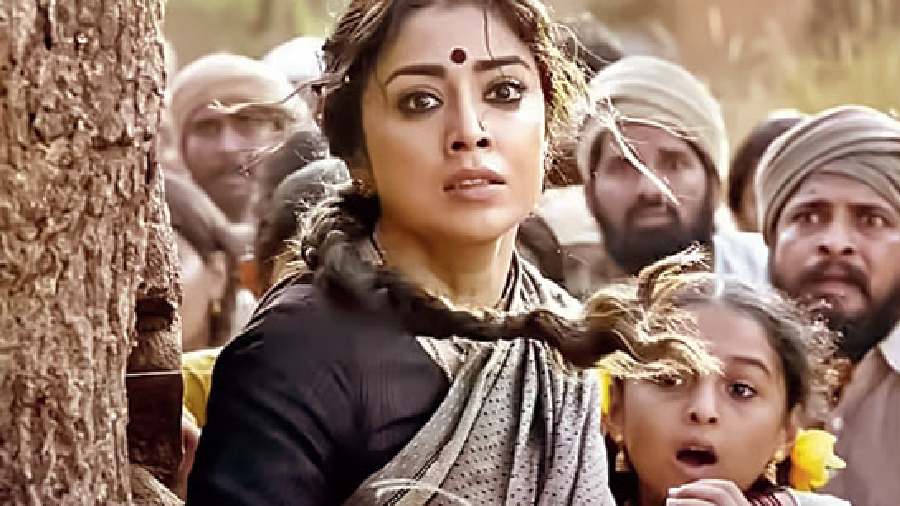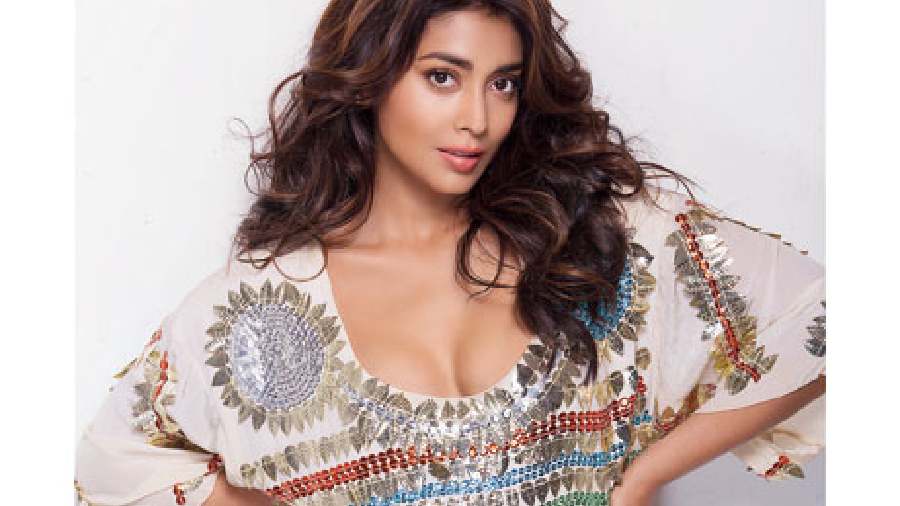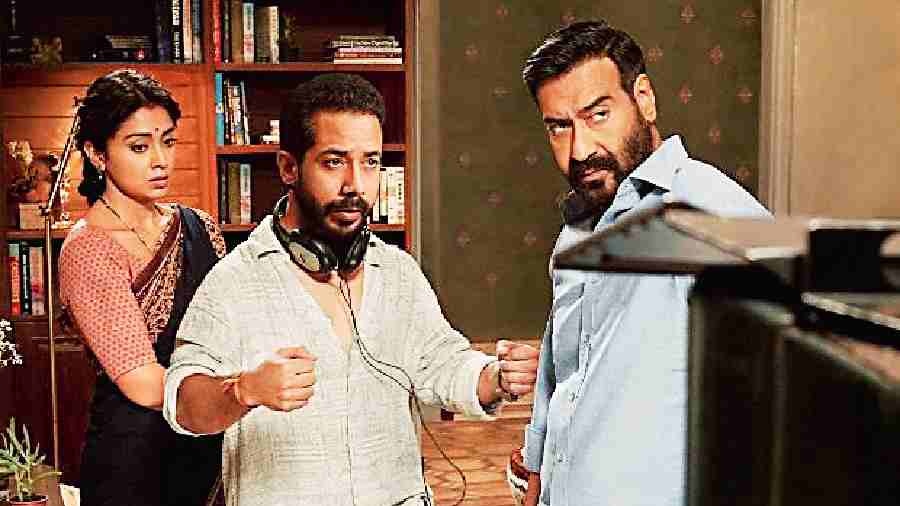Shriya Saran returns as Nandini — the mother and wife who shares her family’s dark secret — in Drishyam 2. The follow-up to the highly-acclaimed Drishyam, released in 2015, which was a remake of the Malayalam film of the same name starring Mohanlal, has Shriya, along with her husband Vijay Salgaoncar (played by Ajay Devgn) confronting the demons of the past as they scurry once more to cover up murder. The Telegraph chatted with Shriya on being Nandini and more.
What are the emotions like as we count down to the release of Drishyam 2, which, given how intriguing and engaging the first film was, is one of the most anticipated films of the year?
I feel that when one has made a good film and worked very hard, you just have to leave it to God and pray. Of course, we missed Nishikant (Kamat), who was the director of the first film (Nishikant passed away in 2020), but Abhishek (Pathak) is also a great director. Just the opportunity to meet the team again was wonderful and it was a beautiful experience to revisit the character of Nandini.
In the second film, seven years have passed and a lot has happened in the interim. However, the past has not left the Salgaoncar family and now it threatens to overshadow their present. In Drishyam 2, Nandini is a more complex character. I have a lot of layers to showcase.
In hindsight, why do you think Drishyam worked so well and what’s the most memorable feedback you can think back to which came in for the film as well as for your performance?
We always thought the film would do well, it was a very well written film and I believed in it. But we had no idea that it would become such a big hit and that people would remember even the smallest nuances of the film... I guess that’s the beauty of a good film, it kind of stays with you.
Drishyam 2 is also very well written, it has amazing twists and turns. It has big emotional moments and great connections. I hope and pray that people go and watch this film in the theatres. That’s the most important thing. We make films for the larger-than-life, big screen, community viewing experience and I think this is a film, with its numerous twists and turns, that deserves to be seen by a collective audience in the theatres.
How has Nandini evolved from the first film to the second, and in terms of character traits and impulses, is she like you in any way?
God forbid, anyone ever finds themselves in the kind of situations that Nandini and her family face. But then again, that’s what the Drishyam films are about... they are about ordinary people with ordinary lives who become stronger than superheroes, at least mentally and emotionally, when they have to protect the family. As individuals, we don’t know how much strength we have in us unless we are thrown into a sticky situation. In the film, Nandini has a very strong line when she tells her family that she doesn’t know where she is getting all this strength from. She says that it’s just not her, and she’s not sure how she’s doing what she is doing.
In the second film, again, Nandini finds herself sucked into the past and she has this reality in her life that she’s hidden in some dark corner and she doesn’t know how to cope with it. That’s what brings on so many layers to the character in Drishyam 2. As people, we all have a lot of layers... we are all strong within but most of us are not aware of what we are capable of till we are faced with a do-or-die situation in life.
As far as Nandini is concerned, there is a lot that I had to understand about her. The way she is with her family or her innocence or the strength that is hidden behind her simplicity. There is a lot of me in her, but there is also a lot that I had to understand and create.
With her, it’s been a process, it’s been a journey over two films.

Shriya in RRR, where she was again cast opposite Ajay Devgn
It’s been a career of more than two decades. What do you look for in a project now?
It’s such a torture sometimes, you know... especially when you look back and think: ‘Oh my God! I should have said ‘yes’ to that project. I should have done that!’ Of course, sometimes you are glad that you didn’t do a film (laughs). It’s a process, actually... you win some, you lose some.
When I am offered something, I narrate the story to myself and if I feel it’s engaging and entertaining and if I can’t stop thinking about that story, then I will do it. For me, it then becomes a story that’s important to be told. I then make it my job to become an integral part of the project, become instrumental in its telling.
Then I look at who the writer and the director are and if I feel they will create something beautiful, then I take on the project. At the end of the day, all stories are simple stories, right? Everything then depends on how that story is told.
When I was called for RRR, it really didn’t matter what I was going to be doing on screen because I was getting the chance to do a film with Rajamouli sir again (after the 2005 film Chatrapathi, co-starring Prabhas).
Now, we have bound scripts and it’s easier to understand where your character and the film is going. There are streaming platforms which have opened up a whole new world. Earlier, the way one would tell a story in Telugu would be different from that of a Hindi film. But now, the barrier of language has completely disappeared. It really doesn’t matter which language you are telling your story in. During the pandemic lockdown, people have sat down and seen cinema from across the world. If the content is great, everyone will watch it.
Also the graph of a character has expanded. In a film, you play a character for 30-40 minutes, but in a series, you can play the same character for so many hours... pack in a backstory, show so many nuances and you can really, really connect with the audiences.

Shriya Saran
Before you became an actor, you aspired to have a career in Kathak. How are you taking that passion forward now?
I used to be trained by Shovana Narayan when I lived in Delhi and I travelled all over with her and performed. When In came to Bombay, I stopped doing Kathak for a while, though I don’t really know why because Kathak gives me the maximum amount of happiness. It will always be my first love.
Now I am learning Kathak from Nutan Patwardhan... she is a fantastic teacher. India has a plethora of classical dance forms, all of which have a very rich history, they have had scriptures written around them and about them. But now, people have kind of stopped learning classical dance forms. Delhi still has a little bit of that culture, but in Bombay it’s almost dying.
Kathak is a dance form that you may learn all your life, and yet it will only amount to a drop. So my dream is to really revive it and create a platform where young people and kids can revisit our culture through this dance form and understand the beauty of it.
Picture: Kaustub Kamble











